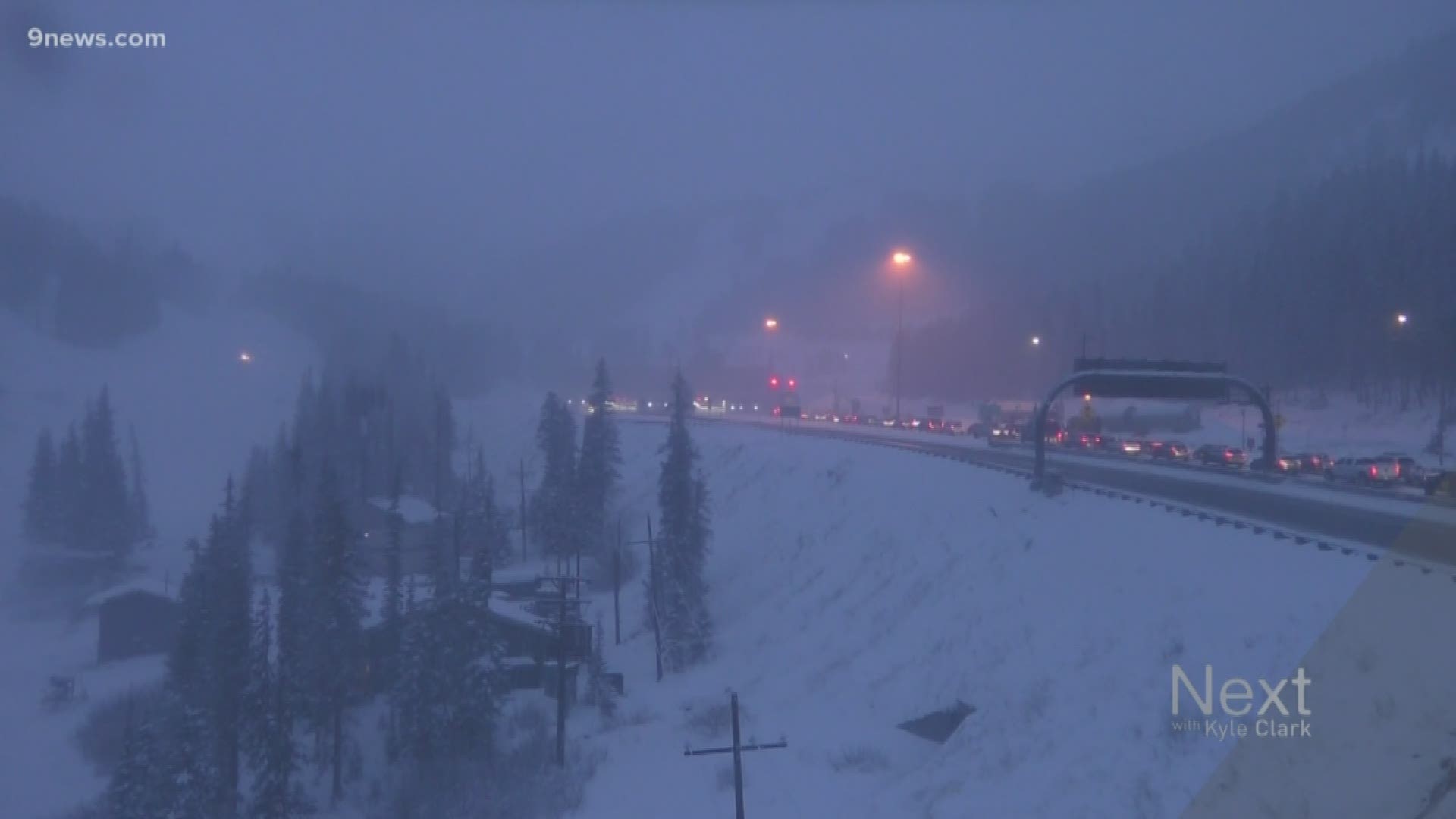DENVER — Colorado adopted a new traction law in 2019, and if drivers follow it, they will have a better chance of avoiding a weather-induced pile-up on I-70.
But Wednesday, when a snowstorm came through Colorado, I-70 closed in the high country.
This was the second time the law has been put to the test this season, and some people have wondered if the new law is working.
If you ask law enforcement, it’s too early to know, partly because the specifics of the law are still being sorted out by Colorado State Patrol (CSP), the Colorado Department of Transportation (CDOT) and state lawmakers.
WHAT IS THE LAW?
The law mandates that vehicles always need to have either snow tires or carry some sort of traction device (like chains or tire socks) if they’re not four-wheel drive or all-wheel drive. The law is in effect from September to May, and it applies to drivers on I-70 between Dotsero and Morrison.
Tires also have to have a tread of three-sixteenths of an inch.
Traction rules can still go into effect on any state corridor at any time. This law, however, is in effect at all times during those months, regardless of weather conditions.
IS IT BEING ENFORCED?
CSP hasn’t cited any drivers for not having proper gear, and one of the sponsors of the original bill, State Rep. Dylan Roberts (D-Eagle), told 9NEWS Thursday he expected that.
Lawmakers, CSP and CDOT have been focused on education for now and are still figuring out what enforcement is going to look like. Part of that means figuring out what can be done preemptively to make sure people follow the law before a big crash on I-70, instead of simply citing drivers after an interstate shut-down.
WHAT ARE THE OPTIONS?
The law passed in May. Lawmakers, CSP and CDOT had a few months to start drafting ideas for implementation.
A July report from CDOT outlines potential options:
Parking lot surveys
- Leave informational brochures about the law on windshields at ski resort parking lots like Loveland, Copper Mountain, Vail, A-Basin, Keystone and Breckenridge.
- Measure tire tread depths at vehicles parked at ski resort parking lots.
- Check how many rental cars are in compliance.
- This is considered an "educational" option, not "enforcment" option.
- Concerns: Would the public be wary of this?
Tread inspections
- Law enforcement could partner with tire shops to implement tread inspections.
- Inspections would be free for drivers.
- Inspections would be valid for a year.
- Vehicles that pass get a sticker.
- If, in the future, there are tire checkpoints, the sticker would expedite or allow drivers to bypass inspection.
- Concerns: Keeping documentation of records, the uncertainty of interest from tire shops, funding inspections, determining a threshold for approving tires.
Secondary offense
- According to the report, CSP said it could easily police tires and cite for violations as secondary offenses in a separate incident.
- Concerns: East to implement, but it "blends engineering/enforcement."
Checkpoints
- CDOT and CSP could set up compliance checks at locations along I-70, either in dry conditions, during only big storms (maybe five times a year, based on suggested criteria) or during any winter storm.
- Locations could include the Eisenhower/Johnson Tunnels or Vail Pass.
- Checks could also be done at specific interchange-ramps or chain stations.
- Concerns: Would spot inspections violate the 4th Amendment? Would drivers speed on the interstate to make up for time lost in an inspection? If inspections are conducted during storms, does that take law enforcement away from other priorities? Does it put law enforcement at risk during storms? There wouldn't be time to screen every single vehicle, especially during storms. Checkpoints could cost about $20,000 per checkpoint per day.
- Obvious concern: Traffic delays. Would this option be a real possibility based on time requirements and because of the costs associated with delays?
WHEN WOULD IMPLEMENTATION START?
None of those options are official, but the report said parking lot surveys "would be a good first step," and there's potential to start that this winter. The other ideas require more vetting.
For now, CSP and CDOT are simply trying to educate drivers about the new law.
"With respect to enhanced corridor management, CSP and CDOT can continue to maintain the status quo on those strategies next winter season, while at the same time evaluating areas for expansion and the resources required, both in terms of law enforcement officers, Safety Patrol/Heavy Tow, and infrastructure. Additionally, CSP can emphasize traction law enforcement a secondary offense," the report said.
SUGGESTED VIDEOS | Full Episodes of Next with Kyle Clark

